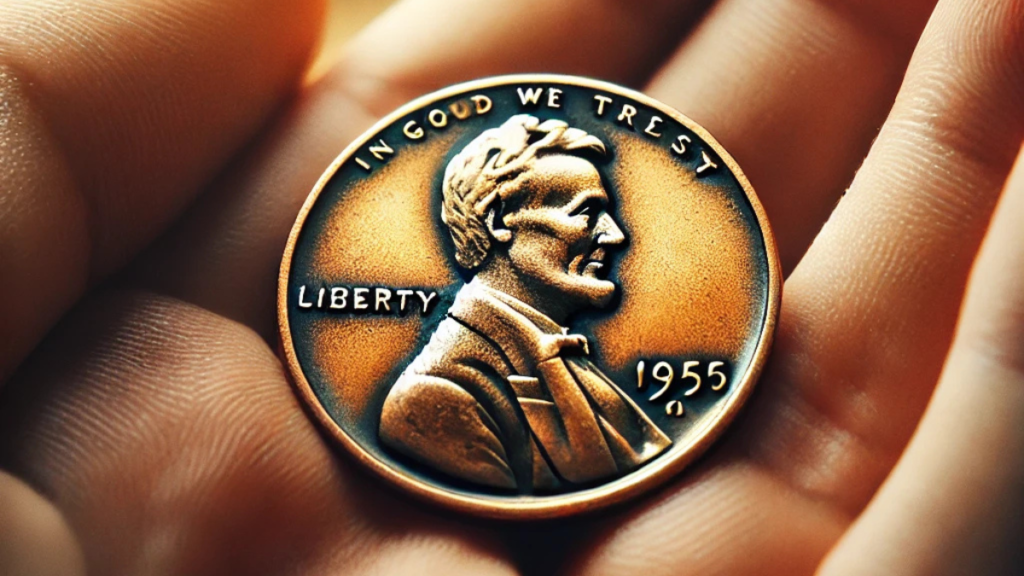The Lincoln Wheat Penny Worth $2.1 Billion: In the intriguing realm of rare coins, few things grab the spotlight like the tale of a Lincoln Wheat Penny allegedly worth $2.1 billion. This near-mythical value has generated interest and controversy among collectors and experts.
While the average penny is simply worth one cent, the idea that an ultra-rare model might be billions of dollars rich has people reviewing their loose coins with a sense of renewed possibility. The anecdote, real or not as it may yet turn out, speaks to the abiding romance with these miniature pieces of United States history.
The Birth of an American Classic
The Lincoln Wheat Penny was first seen in American pockets in 1909, a watershed moment in U.S. coinage history. For the first time, the likeness of an American president appeared on a coin in circulation, shattering the tradition of representing figures symbolically and not using actual individuals.

Designer Victor David Brenner fashioned the now-familiar image of Abraham Lincoln. The back had two stalks of wheat encircling the words “UNITED STATES OF AMERICA” and “ONE CENT,” which led to the coin’s common name.
What Could Make a Penny Worth Billions?
For a coin to warrant a price of $2.1 billion, some remarkable alignment of circumstances must occur. Such a penny would probably have to have extreme rarity maybe being the sole existing example of its type combined with perfect preservation and great historical significance.
Numismatic specialists propose that such a coin could be a previously unrecognized minting mistake or maybe have a metal composition never before recorded. The most sought-after coins usually exist in times when manufacturing standards shifted, producing scarce transitional coins or errors that were missed during quality control.
The Wartime Connection
Several of the most valuable Lincoln Wheat Pennies have a connection to World War II, specifically during the year 1943. That year, the United States Mint transitioned from copper to zinc-plated steel pennies in an effort to save copper for the war.
Some copper blanks were said to have been left in the presses, creating very rare 1943 copper pennies. Although these coins have sold for more than $1 million, none has come close to anything in the billion-dollar range. If there is a $2.1 billion penny, it would probably have even more unusual features than those already discovered by collectors.
Perfect Preservation: A Necessary Condition
Any coin that is worth billions must be in perfectly pristine condition. Professional coin grading services utilize a 70-point scale, with 70 being a perfect, unblemished specimen. The majority of coins in circulation have at least some wear, greatly diminishing their value.
A genuine billion-dollar penny would probably have to be uncirculated and untouched since the day it was minted. Such ideal preservation would be unusually uncommon for a coin that’s almost a hundred years old, particularly one struck for general use and not for a collector’s piece.
Could Such a Valuable Coin Still Be Found?
Although it seems nearly impossible that a coin of a billion dollars can still go unnoticed, the high volume of Lincoln Wheat Pennies minted and set aside in collections, wills, and out-of-sight places has surprises still up its sleeve.
Billions of pennies were struck between 1909 and 1958, and many of them are still stashed in jars, albums, and safety deposit boxes around the nation. Treasure coins have been found in pocket change, old collections, and even in walls during remodeling, keeping hope alive for discovering treasure.
The Authentication Challenge
Authentication of a coin of such immense value would involve extensive scientific testing. Contemporary numismatic authentication relies on advanced technology, such as high-resolution microscopes, 3D imaging, metal content analysis, and cross-referencing with known authentic specimens.

Any coin purported to be worth billions would undergo rigorous examination by several specialists before such a value could be authenticated. The process of authentication would probably become a significant event among numismatists, garnering widespread attention from collectors, museums, and financial institutions globally.
Impact on the Collecting Community
Even if the $2.1 billion penny is less fact than fiction, the tale has a beneficial impact on the community of coin collectors. It motivates individuals to study numismatics, inspect their coins more closely, and explore the historical importance of mundane currency.
Most collectors started collecting after listening to stories about valuable coins that could lurk in circulation. Though most will not hit a billion-dollar coin, they may find other collectible varieties or simply gain an appreciation of American history through its coins.
The Investment Perspective
From the investment aspect, rare coins have historically given wonderful returns. Though the $2.1 billion price tag is rare, many Lincoln Wheat Pennies have appreciated very much from their original one-cent face value.
Some dates and varieties consistently sell for hundreds or thousands of dollars. The record-breaking authenticated Lincoln Wheat Penny worth over $1.7 million was a copper 1943 specimen. Such a history of appreciation makes investors keen on numismatics as an alternative asset class.
The Legacy of Lincoln Wheat Pennies
Whether or not a billion-dollar penny exists, Lincoln Wheat Pennies are favorites among collectors due to their historic value and classic design. These pennies saw almost half a century of American history, from the early 20th century until two World Wars and into the dawn of the Space Age.
Read More :- $1,100 Cost-of-Living Relief: Centrelink Recipients Eligibility and Claim Process
Each coin is a tiny bit of American heritage, having gone through thousands of hands during turning points in the country’s history. This historical connection makes them priceless beyond any monetary value.
Disclaimer: This article is provided for informational purposes only. The existence of a Lincoln Wheat Penny valued at $2.1 billion has not been officially confirmed by numismatic authorities. Coin values fluctuate based on market conditions, collector demand, and authentication status.
Always seek professional evaluation before making any assumptions about a coin’s value or making financial decisions based on potential coin values. The author and publisher bear no responsibility for any actions taken based on this information.
FAQs:-
Which Lincoln Wheat Penny is the most valuable?
The 1909-S VDB and 1943 copper pennies are among the most valuable.
What makes a Lincoln Wheat Penny valuable?
Rarity, mint errors, historical significance, and demand among collectors.
What are the key dates to look for in Lincoln Wheat Pennies?
1909-S VDB, 1914-D, 1922 no D, 1943 copper, and 1955 doubled die are key dates.

